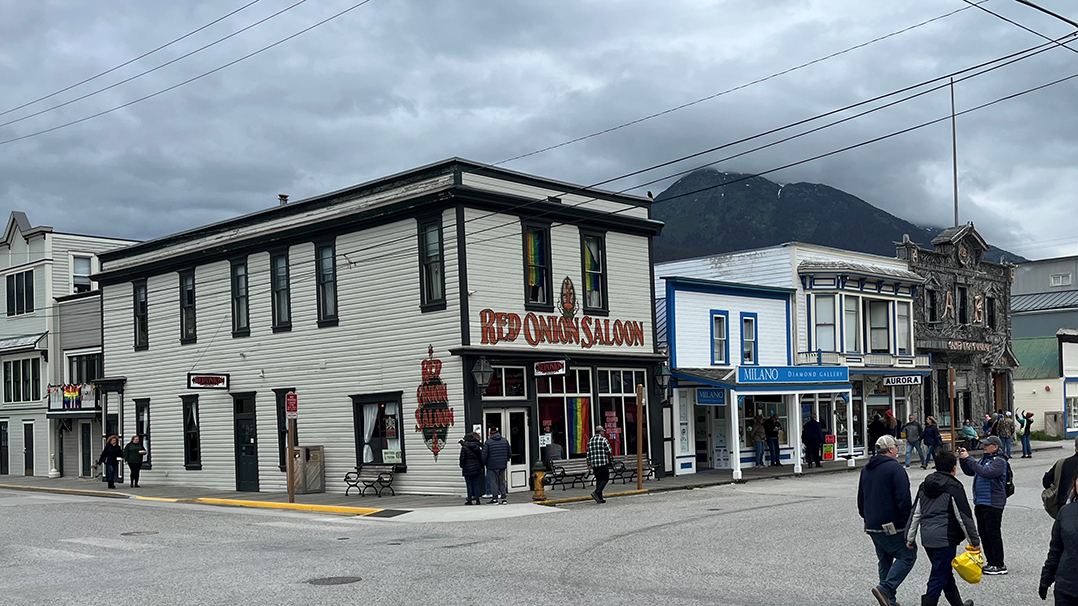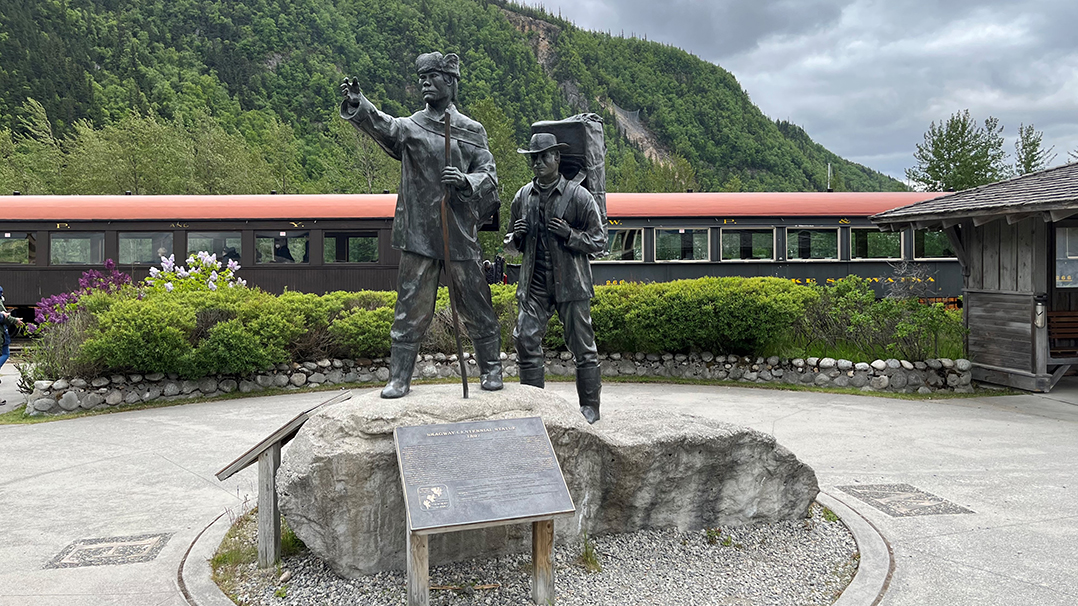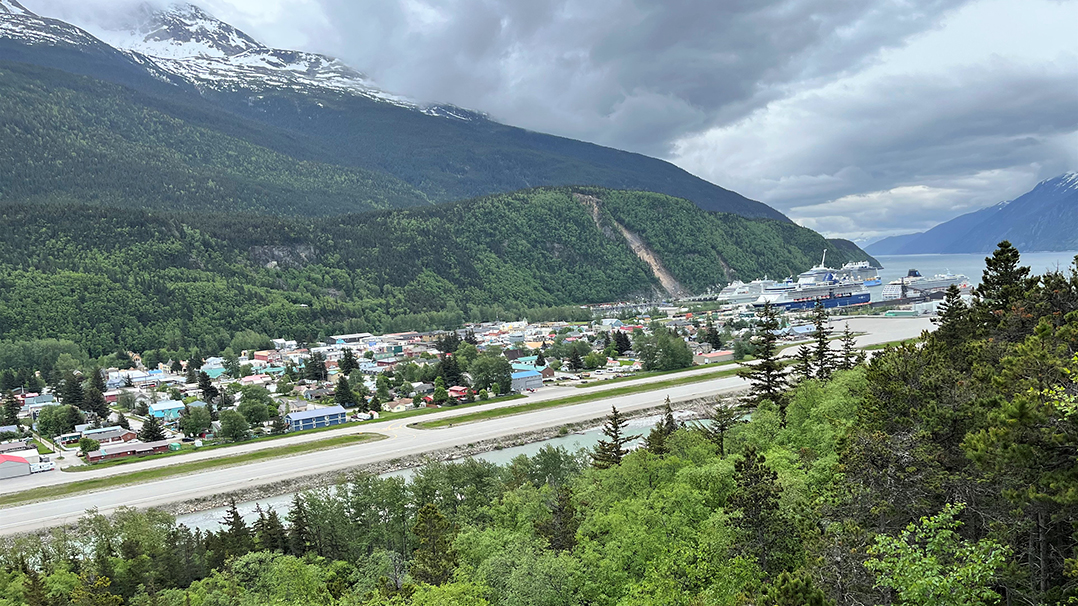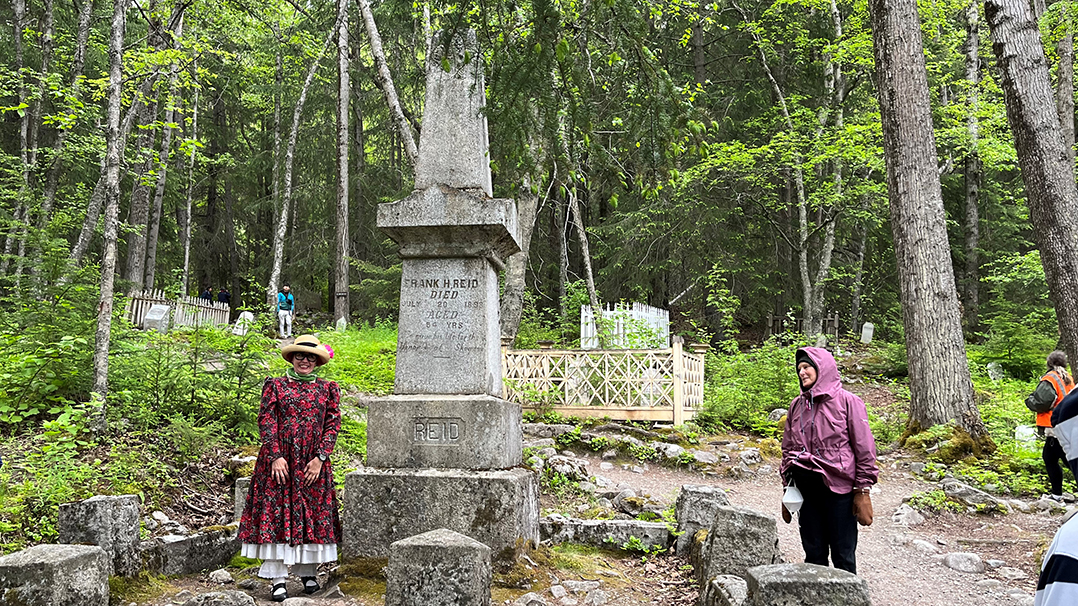Today, in our continuing tour of Alaska, we visit Skagway, 100 miles northwest of Juneau.
After gold was discovered in the Klondike region of Canada in 1896, American prospectors began sailing to the northern end of the Inside Passage, a waterway along the west coast of North America protected by barrier islands. Prospectors, many led by indigenous guides, walked the mountainous White Pass Trail and sailed on the Yukon River to the gold fields. To supply the prospectors for their 500-mile trek, a town soon formed, named “Skagway” after the Tlingit name for the area.
By June 1898, Skagway, with a population of about 10,000, was the largest city in Alaska. Because of its rapid growth, away from civilization, Skagway was lawless. About 300 prostitutes serviced arriving prospectors, some having come to Skagway to be prospectors only to learn that women could not stake claims. By 1890, when the narrow-gauge White Pass & Yukon railroad was completed through the mountains, the Klondike Gold Rush was over, and the town began to wither. Skagway was saved from extinction after residents began promoting it as a tourist destination. Six blocks of downtown Skagway have been designated a National Historic District.
Skagway, with a population of just more than 1,000, attracts 1 million people each year. Replica streetcars, with costumed drivers, take visitors around town. Popular stops include the Gold Rush Cemetery, containing the grave of Frank Reid, who died in an 1898 shootout with Soapy Smith, a notorious swindler also killed in the shootout. Broadway Street includes many restored historic structures, including the Arctic Brotherhood Building, covered with 8,800 pieces of driftwood. The Red Onion Saloon features a reconstructed brothel on the second floor, where costumed “madams” explain early uses for Lysol. The White Pass & Yukon Route takes passengers through scenic mountains to the White Pass Summit.







